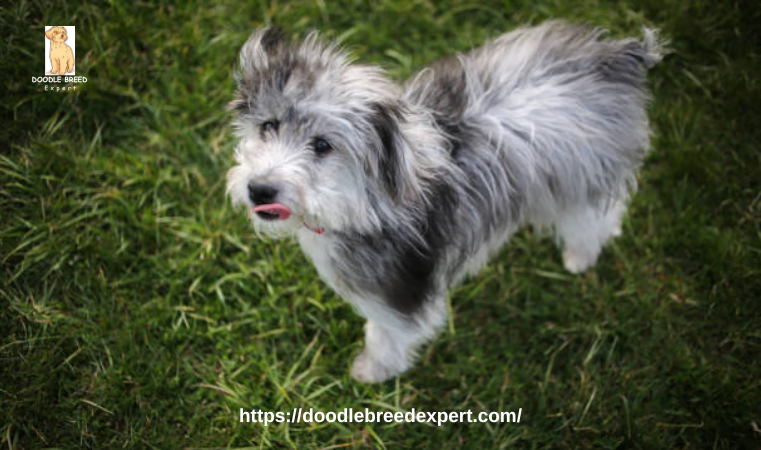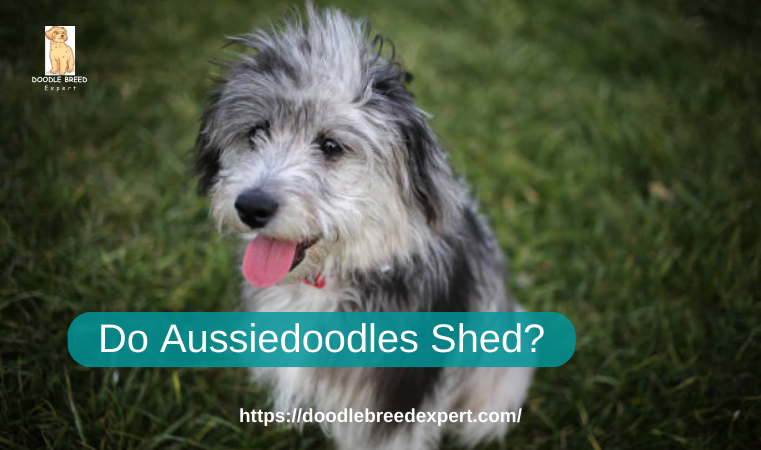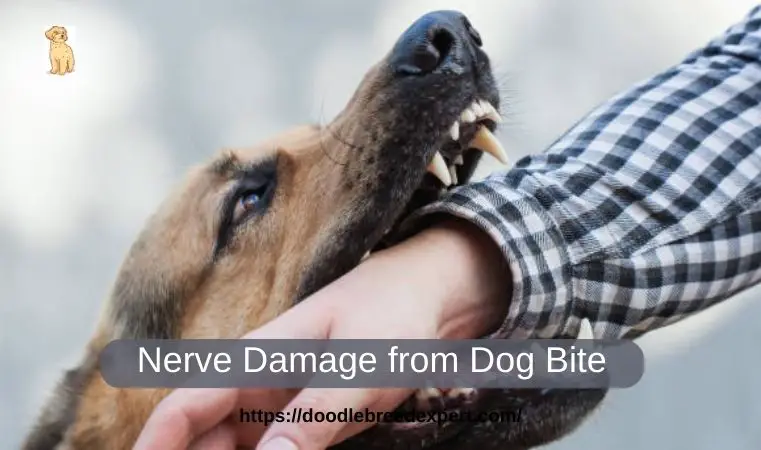Do Aussiedoodles Shed? When evaluating potential dog breeds, a family often first considers whether they shed and the amount of fur they’ll need to clean up. If allergies are an issue, shedding quickly becomes a priority.
So, does the Aussiedoodle shed? Like all other Doodle breeds, this breed is renowned for its minimal to non-shedding. While you may find some hair in the brush after grooming, there won’t be large amounts of hair scattered about.
The shedding of an Aussiedoodle can best be compared to occasional human hair shedding. They shed so little that they’re often called “non-shedding” breeds, making them very good candidates for allergy sufferers.
The type of coat will determine how much an Aussiedoodle sheds based on the type. Regular health checks and grooming of your Aussiedoodle can help minimize the frequency of shedding.
Do Aussiedoodles Shed?
One common question prospective dog owners ask is, “Do Aussiedoodles shed?” This answer lies in knowing and understanding their unique characteristics. While there are no non-shedding breeds of dogs, Aussiedoodles have a great advantage over many other breeds due to their Poodle lineage. This ancestry gives them an edge in being allergy-friendly because the Poodle gene gives them a more groomable coat.
Every dog does drop some hair; however, even Aussiedoodles shed fur from time to time. The degree of shedding depends on coat type and dog genetics. To know if your Mini Aussiedoodle will shed requires looking at these factors along with the advice of a breeder or veterinarian for specifics.
Different Varieties of Aussiedoodle Coats
Aussiedoodles are designer dogs originating from the intentional crossbreeding of Australian Shepherds and Poodles. They have an extensive range of coat types and patterns of shedding. These coats come in distinct forms with varied characteristics and maintenance needs. Listed below are the three main varieties of coats on Aussiedoodle:
Curly Coat Aussiedoodle
The curly coat Aussiedoodle is commonly the most sought-after among this breed due to its minimal shed hair. This coat type resembles the Poodle parent’s curly fur, usually consisting of a single layer of soft, curly hair.
This coat type requires the most maintenance among all varieties because while low shedding may be a positive aspect, it must be noted that the textured curls can easily form tangles which trap loose hair, dirt, and debris, making them likely to mat. Owners of curly-coated Aussiedoodles must brush every day to keep their dog’s coat healthy and free from tangles.
Wavy Coat Aussiedoodle
The Australian Shepherd and Poodle’s wavy coat ancestors have an awesome combination of traits. This variety is usually single-layered with minimal shedding, thanks to the genes of the blouse. Compared to the curly coat, this hair type is much easier to handle since it does not become so tightly curled or textured. Because of that same reason, grooming and taking care are way simpler for owners.
Aussiedoodle Straight Coat
Straight-coated Aussiedoodles tend to inherit their hair traits from the Australian Shepherd side. This coat often includes an insulating undercoat but generally goes along with shedding much more than its curly and wavy counterparts, especially during seasonal shedding periods. These dogs still require regular brushing to remove loose dead hair trapped beneath the heavy dense layers of double coat due to being straighter and looser curled compared to wavy or curly.
How Much Do Aussiedoodles Shed?
Aussiedoodles, thanks to their Poodle roots, are generally and usually low- to non-shedding dogs with the possibility of being a safe choice for those with allergies. Those with straight or wavy hair shed minimally while shedding considerably less than their ancestors, the Australian Shepherd. But double-coated Aussiedoodles can still shed, especially during shedding seasons.
Failure to brush regularly with coat maintenance will exacerbate this issue. All-in-all, suppose you’re looking for a dog breed that’s allergy-friendly and sheds very little besides occasional tumbleweeds from couches and carpeting. An Aussiedoodle is worth your consideration, especially if you go for one with a curly or wavy coat, since they tend to shed the least among Aussiedoodle variations.

Aussiedoodle Hair Types and Genetics
Shedding tendencies of an Aussiedoodle are highly genetically makeup-dependent and more so on the type of hair it inherits. However, making hybrid varieties less prone to shed, the presence of Poodle genetics plays a very important role in this process. Shedding, however, depends on whether an Aussiedoodle takes after its Australian Shepherd or Poodle lineage.
To gauge an Aussiedoodle’s shedding potential, understanding its genetic composition is crucial. Breeders who specialize in producing different generations of Aussiedoodles, each with a differing genetic mix:
| Different Generations of Aussiedoodles |
|---|
| F1 Aussiedoodle (first-generation): 50% Australian Shepherd and 50% Poodle |
| F1B Aussiedoodle (first-generation backcross): 25% Australian Shepherd and 75% Poodle |
| F1BB Aussiedoodle (first-generation backcross): 12.5% Australian Shepherd and 87.5% Poodle |
| F2 Aussiedoodle (second-generation): 50% F1 Aussiedoodle and 50% F1 Aussiedoodle |
| F2B Aussiedoodle (second-generation backcross): 37.5% F1 Aussiedoodle and 62.5% F1B Aussiedoodle |
| F2B Aussiedoodle (alternate cross): 25% F2 Aussiedoodle and 75% Poodle |
| F3 / Multigen Aussiedoodle: Various genetic combinations, depending on parentage |
F1b, F1bb, F2b, and F2bb Aussiedoodles with more Poodle genetics shed the least. In contrast, Aussiedoodles that are straight-haired, such as F1 and F2, often shed more than their curly-fibered counterparts.
Seasonal changes also affect shedding, much like the Australian Shepherd. Temperature shifts from warm to chilly or cold to warm weather will cause increased hair loss. Even though purebred Australian Shepherds may shed less when compared with straight-hair sheds, you might notice more loose hair around your house during seasonal shedding times.
Aussiedoodle Health Problems That May Induce Shedding.
Aussiedoodle Health Problems That May Induce Shedding
Apart from their genetic makeup and coat types, Aussiedoodles can be triggered by various health problems to shed. Awareness of these health problems is important for Aussiedoodle owners to ensure their hairy friends are healthy. Below, we dig into some key health issues responsible for shedding in Aussiedoodles:
Anxiety
Multiple studies have established a correlation between anxiety and stress in dogs, resulting in excessive shedding. An anxious dog will lick more often, groom furiously, and scratch its skin excessively. Anxiety results from separation anxiety, boredom, and lack of mental and physical stimulation. Since these dogs are smart and active breeds, providing adequate exercise bouts and spending quality time with them helps curb anxiety-related shedding.
Apart from this, changes in the routine or stressful events like moving to a new home, returning to work after maternity leave, introducing a new pet or baby as part of the family and other family structure changes (divorce or death of family member) can trigger anxiety which results in shedding.
Ticks, Fleas and Parasites
Parasites are one of the problem sources for skin irritation resulting in excessive shedding. Proper hygiene, medication, and regular prevention measures would reduce shedding-related problems associated with external parasites. Routine checking and treatment of these external parasites help maintain your Aussiedoodle’s coat health.
Diet
Inadequate nutrition could also be a contributing factor in causing shedding. If your dog incorporates inadequate essential nutrients into its diet, it will result in excessive hair loss or even bald spots. Sudden changes in diets also lead to shedding. Vets must, therefore, consult to ensure that Aussiedoodle gets a well-balanced diet tailored to its unique needs. Dietary allergies can also cause shedding; thus, you should discuss this possibility with your vet.
Other Health Conditions:
Aussiedoodles are predisposed to skin allergies, sensitivities, and other medical conditions that could cause excessive shedding. Any unusual change of behavior from lethargy to depression or any signs of discomfort on the part of the dog must immediately visit a veterinarian for a proper diagnosis. The health problems will help minimize/shedding and improve overall for the Aussiedoodle.
Read also Best Brush for Aussiedoodle
How To Control Aussiedoodle Shedding
Shedding can be managed effectively by focusing on a balanced diet, a comfortable living environment, and routine grooming. If shedding is related to diet, consider dog food rich in omega-3 and omega-6 fatty acids, such as from sources like salmon or flaxseeds.
Adjusting protein sources may help if your dog has food sensitivities or allergies. Help keep your Aussiedoodle healthy with love, exercise, and mental stimulation throughout the day to reduce stress. Consult your vet if you suspect a health problem.
Proper grooming is essential for controlling shedding. Brush daily because it removes loose hair, dirt, and debris to prevent matting. Occasional baths are not only cleaning, but they remove dead hair, too.
By following these steps, you can significantly reduce the excessive shedding of your Aussiedoodle, keeping its coat healthy and your home clean.

FAQs
Do Aussiedoodles with straight hair shed?
Aussiedoodles with straight hair are most likely to inherit the moderate shedding characteristics of the Australian Shepherd, who, unlike the Poodle, has moderately shedding straight or undulating hair. Therefore, if your Aussiedoodle has a straight coat, they will likely lose more hair than one with a curly coat. However, Aussiedoodles will still likely shed less than a pure Australian Shepherd.
Are Aussiedoodles double coated?
Some Aussiedoodles may have double coats, similar to the Australian Shepherd, but it depends on the individual dog. Some will have a double coat, like the Australian Shepherd, while others will have a single coat, like the Poodle.
Do Aussiedoodles shed seasonally?
The seasonal shedding of Australian Shepherds occurs in the spring and autumn for a few weeks; hence, if your dog is mainly Australian Shepherd breeding, it will be possible to shed seasonally. Poodles do not shed at all seasonally or regularly; therefore, seasonal shedding could not happen unless he is nearly Poodle.
Do Aussiedoodles shed their puppy coat?
How much of a juvenile coat shows to the human eye, how long it lasts and when it starts depends on individual dogs. An Aussiedoodle may start shedding into an adult coat between 6 and 12 months old.
How big do Mini Aussiedoodles get?
Since Aussiedoodle is a crossbreed, the AKC does not recognize it as its breed. The Poodles come in three sizes: Toy, Miniature and Standard. The average height for Australian Shepherds is between 18 to 23 inches tall. They can be any size, from barely making the standard to much taller than that standard, and there is no set, specific standard for this breed.
People generally agree that most Miniature Aussiedoodles will top out at around 10 to 12 inches tall and weigh somewhere ranging from 25 to 70 pounds depending upon the exact size of the Toy or Miniature Poodle used in breeding along with other factors unique to each litter as well.
Conclusion
Aussiedoodles shed, and the amount of shedding depends on each individual’s genetics and how they inherit more traits from either the Australian Shepherd or Poodle parent. Straight-coated Aussiedoodles are known to shed more than curly-coated ones. Shedding is generally low to moderate compared to most other breeds.
Even so, a dog’s ability to shed can vary depending on diet, grooming habits, and overall health. Regular brushing, proper nutrition, and an occasional bath minimize shedding considerably. Overall, Aussiedoodles are considered fairly non-shedding but still make great hypoallergenic or low-maintenance dogs for people and families alike.
References:
- Sobus, K. (2022) Do Aussiedoodles Shed?, AZ Animals. Available at: https://a-z-animals.com/blog/do-aussiedoodles-shed/ (Accessed: 12 September 2023).
- Grenley, G. and Grenley, G. (2021) 10 things only Aussiedoodle people understand, The Dog People by Rover.com. Available at: https://www.rover.com/blog/10-things-aussiedoodle-people-understand/ (Accessed: 12 September 2023).
- Aussiedoodle (2023) DogTime. Available at: https://dogtime.com/dog-breeds/aussiedoodle (Accessed: 12 September 2023).
- Aussiedoodle (no date) PetMD. Available at: https://www.petmd.com/dog/breeds/aussiedoodle (Accessed: 12 September 2023).






